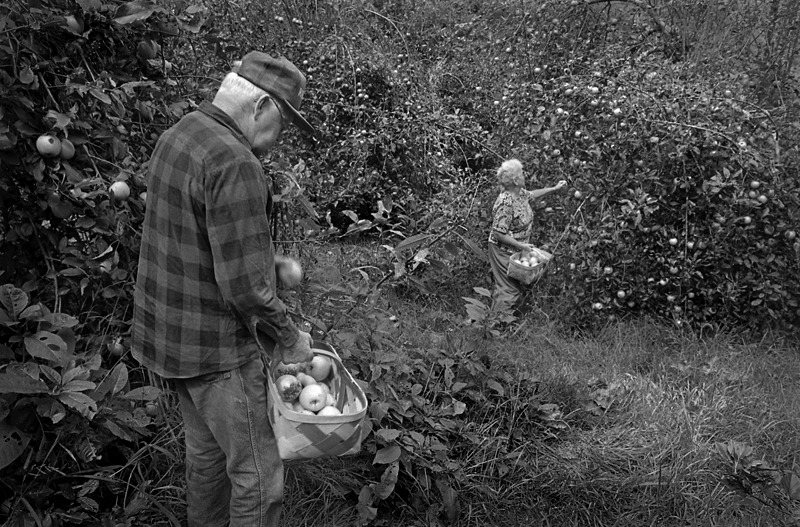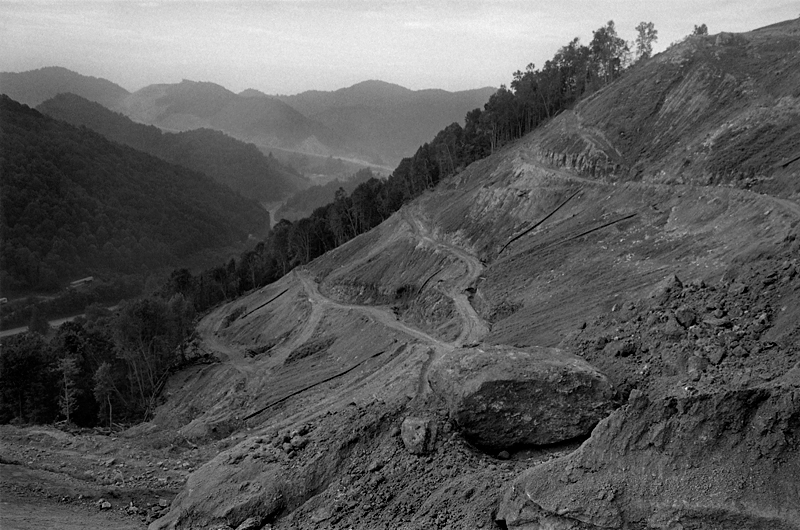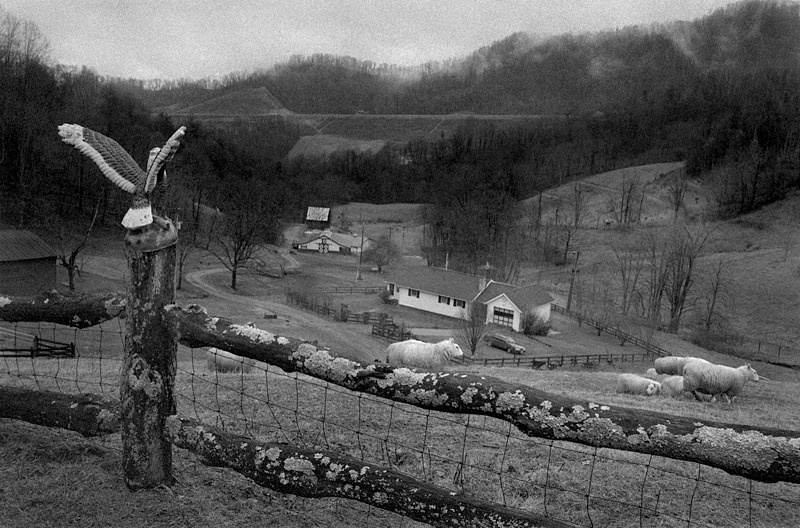Books > The New Road
THE NEW ROAD
from the book jacket
For more than three decades Rob Amberg has photographed and written about the land and life of Madison County, deep in the mountains of western North Carolina. In his earlier award-winning book, Sodom Laurel Album, Amberg documented the lives of the old-timers whose ancestors carved out a fresh start in the Appalachian wilderness. Here were people who spoke with one voice about family, land, and the broader meaning of place. In The New Road, the story gets more complicated, as Amberg probes the age-old impact that road-building has on a traditional community, such as Madison County, in which people long for and even cling to the past yet want the benefits associated with so-called progress. Amberg reveals how residents – old and new – wrestled with the impact that Interstate 26 would have on this once-isolated rural enclave and how core values would be tested against inevitable change.
Roads have defined human commerce and culture since the earliest days of human civilization, Amberg reminds us. Even today we are witness to the evolution of roads on the American landscape. In Madison County, migratory bison trails became the foundation for commercial trading routes for the Cherokee and Catawba nations, which in turn became the blueprint for country roads and then state and U.S. highways and finally Interstate 26, linking the local community with the larger world.
The New Road offers a personal, in-depth view of how a traditional Appalachian community came to grips with the twenty-first century. Rob Amberg presents an enduring tale of a traditional community’s understanding of its own cultural evolution and the meaning of progress.
“The road may be our most shared place and being on the road our most common experience. In The New Road, Rob Amberg not only chronicles the history, symbolism, and impact of a new interstate highway in the North Carolina mountains, but also offers us a way to understand what lies beneath and beside the pavement on which we so frequently travel. With his profound photographs, insightful writing, and a wide-range of oral history interviews, Amberg presents a full and complex picture of the I-26 corridor. Like the road it chronicles, this book cuts a fresh, new path in documentary literature. It is a work of great imagination, detail, and insight.”
– Tom Rankin
















